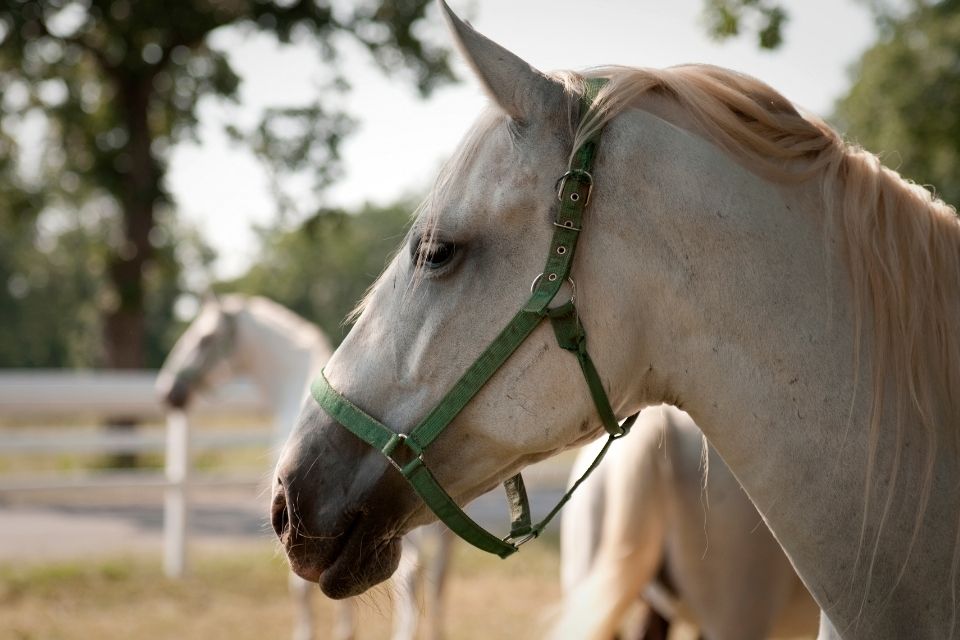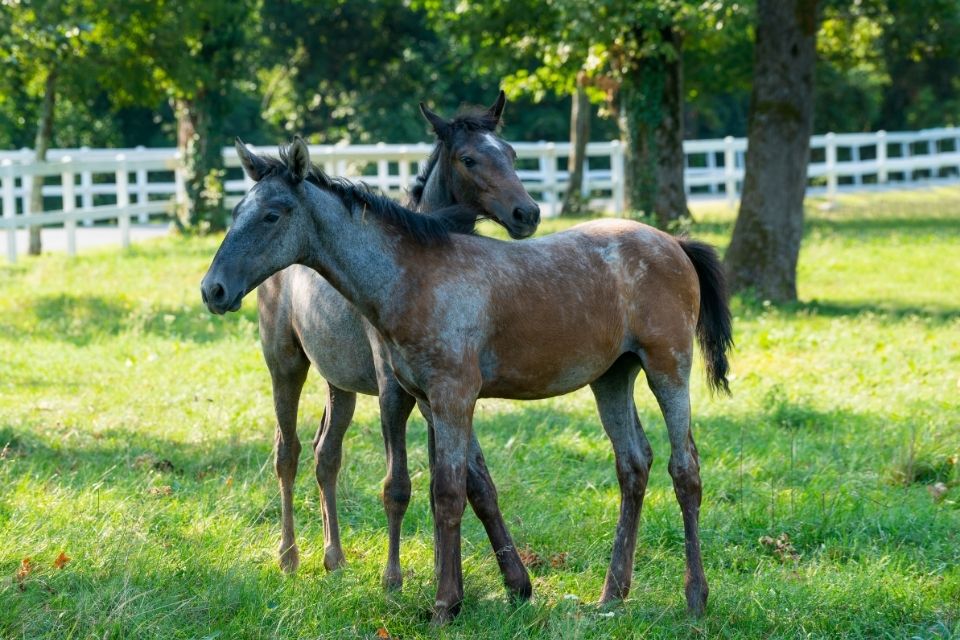
Disney made a movie in 1963 called Miracle of the White Stallions about the Lipizzaner horse and I loved watching it as a kid. The white stallions danced with their riders and floated across the arena. Then the war came, and all was nearly lost. But the brave Spanish Riding School director, along with a lot of people who cared, saved the Lipizzaner breed.
The famous white stallions of the Spanish Riding School in Vienna, Austria are known for their athleticism, beautiful performances, and escape during World War II. They are called Lipizzaner horses in Europe and referred to as the Lipizzan horse in North America. Whatever the name, the history and aura of the breed remains the same.
Lipizzaner horses are not just a breed of horse, they are part of the cultural history of Austria and Europe. In short, the horses are works of art. Lipizzaners are famous for performing all the high school dressage moves, sometimes called ballet with horses. The Airs Above the Ground consists of the Capriole, Courbette, and Levade. Battlefield success hinged on a horse’s ability to perform the high school movements, and they are amazing athletic feats.
Early History
The Hapsburg Monarchy controlled Austria and Spain for around 650 years. It started when Rudolf I went to battle and won control of Austria and Vienna in the 1270s. It was a small area though, and over the coming generations, they eventually controlled more of central and eastern Europe.
Classical riding gained popularity again during the Renaissance (1300-1600). The Hapsburg Monarchy bred horses they could use for classical riding or on the battlefield. They selectively bred the Lipizzaner horses for 400 years – from 1580 to 1918 – when their monarchy ended.
The name Lipizzaner comes from the Lipizza region of modern-day Italy and Slovenia. Breeding programs in Lipizza and Kladrub crossed Spanish horses with Karst horses. Carefully planned breeding continued for generations, crossing with Neapolitan bred horses from Spain, Germany, and Denmark. When Spanish horses were unavailable, they used Arabians, adding strength and stamina.

Lipizzaner Breed Characteristics
Lipizzaner horses are famous for their white coats. However, that dominant feature has appeared over time, and was not always present in the breed. Foals are born dark brown, black, or mouse grey and become lighter each year. They appear white between the ages of six and 10. There is still occasionally a Lipizzaner that doesn’t turn white. Before the trait took hold in the breed though, there were chestnuts, duns, piebalds, skewbalds, and other colors.
The famous white coat is not the only breed characteristic that Lipizzaners are known for. Although they are smaller horses, averaging in size from 14.2 to 15.2 hands high, they have a cresty neck that sets high out of their shoulder and a baroque body style that makes them appear larger. Lipizzaners have large eyes and small, typey ears that give them a kind and knowing look about their faces.

The Spanish Riding School
Lipizzaner horses performing at the Spanish Riding School are always in perfect harmony with their riders. Years of careful training go into making each horse a superb athlete. Training today follows the same methods used centuries ago. The Spanish Riding School is the oldest (over 450 years!) and most famous classical riding school.
Visitors to Austria can go to the Spanish Riding School in Vienna and enjoy a performance of the famous white stallions at the Winter Riding School at Hofburg Palace. Horses and riders dance to Viennese music, perform the Airs Above the Ground, and in the School Quadrille.
World War II and the Lipizzaner Horse
The breed survived many threats during the Hapsburg Monarchy. The horses were an extension of the royal family and were kept safe by removing them to other locations. In fact, the Lipizzaner breed was established in other locations because horses were left behind to improve breeding programs.
World War I brought the collapse of the Hapsburg Family; their possessions, including the Lipizzaner, were equally split. Austria, Italy, Czechoslovakia, Hungary, Romania, and Yugoslavia all had Lipizzaner breeding programs. Then, World War II started.
The German army transferred all the mares and foals in Yugoslavia, Italy, and Austria to the stud farm at Hostau in Czechoslovakia during World War II. Alois Podhajsky was the director of the Spanish Riding School in Vienna at the time and his heroic efforts saved the school. He then worked with General George S. Patton of the American Army to save the mares and foals at Hostau and return them to the Piber Stud farm in Austria. Without these heroic efforts, the Lipizzaner breed would be extinct.

The Lipizzaner Horse Today
The movie, Miracle of the White Stallions, has the typical Disney happy ending. All the people who helped the Lipizzaners survive World War II are there to see their first performance after the war. However, the Lipizzaner horse really did get a happy ending.
Austria and central Europe are still home to most of the world’s Lipizzaner Horse population. The Piber Stud farm houses the breeding stock for the Spanish Riding School. The breeds appeal led others to import them to their own countries. Owners and breeders in their adopted homes have carefully stewarded the breed to maintain their purity.
Royalty bred these magnificent horses and they have retained their regal look and style. The traditions of the Spanish Riding School and enthusiasts throughout the world secure their continued place in our history and present. Lipizzaners are a relatively rare breed, with only around 3,000 in existence. Those who own and love them steward the breed and use their horses for classical dressage, driving, and pleasure rides. The Spanish Riding School in Vienna continues offering exhibitions and tours to everyone who comes to Vienna to see the famous dancing white stallions.
Sources: The Spanish Riding School, Visiting Vienna, Lipizzan Association of North America, IMDb
